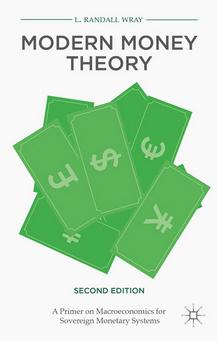
Research Topics
Publications on Exchange rates
-
Foreign Deficit and Economic Policy: The Case of Mexico
Working Paper No. 1053 | June 2024The article analyzes Mexico under globalization, particularly on the free mobility of capital. It argues that globalization has detrimentally impacted the productive and external sectors, causing the economy to become excessively reliant on volatile capital inflows from abroad. The Mexican government—instead of undoing the structural problems that lead to external deficits—implements policies that resolve the short-term liquidity needs and go against economic growth, as if they are promoting capital inflows. The national currency has appreciated greatly and acts only in favor of the financial sector and in detriment of the productive and the external sector.
The Mexican economy has fallen into a context of high external vulnerability since it rests on capital inflows. Capital inflows are highly fragile and volatile. They depend not only on internal problems, but also on the world economy and expectations. For this reason, the reliance on capital inflows to appreciate the peso is unsustainable.
Given the meager growth of the world economy and trade, globalization is being questioned and various countries are implementing industrial and protectionist policies. If Mexico continues to bet on outward growth through nearshoring, it will have no chance of overcoming the problems it faces.
Mexico cannot continue with an economic policy that does not generate endogenous conditions to growth and that has made the economy dependent on the behavior of international financial markets which generate recurrent crises.Download:Associated Program:Author(s):Arturo Huerta G. -
Exchange-Rate Stability Causes Deterioration of the Productive Sphere and Destabilizes Developing Economies
Working Paper No. 1052 | June 2024For Matías Vernengo and Esteban Pérez Caldentey (2020), the MMT literature overemphasizes the choice of the exchange rate regime and the relevance of a flexible exchange rate regime, as well as the ultimate effect of that choice upon the policy space. In addition, they argue that the role of capital flows is underexplored, and that the relevance of the balance-of-payments constraint is often underestimated. Vernengo and Pérez’s criticism fails to consider that exchange-rate flexibility makes it possible to use flexible fiscal and monetary policies as well, to boost growth and employment, and to reduce the balance-of-payments constraint.Download:Associated Programs:Author(s):Arturo Huerta G. -
Modern Money Theory: A Primer on Macroeconomics for Sovereign Monetary Systems, Second Edition
Book Series, September 2015 | September 2015By L. Randall Wray

In a completely revised second edition, Senior Scholar L. Randall Wray presents the key principles of Modern Money Theory, exploring macro accounting, monetary and fiscal policy, currency regimes, and exchange rates in developed and developing nations. Wray examines how misunderstandings about the nature of money caused the recent global financial meltdown, and provides fresh ideas about how leaders should approach economic policy. This updated edition also includes new chapters on tax policies and inflation.
Published by: Palgrave Macmillan
-
US “Quantitative Easing” Is Fracturing the Global Economy
Working Paper No. 639 | November 2010The Federal Reserve’s quantitative easing is presented as injecting $600 billion into “the economy.” But instead of getting banks lending to Americans again—households and firms—the money is going abroad, through arbitrage interest-rate speculation, currency speculation, and capital flight. No wonder foreign economies are protesting, as their currencies are being pushed up.
Download:Associated Program:Author(s):
